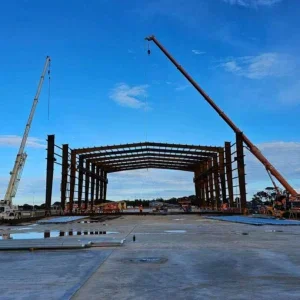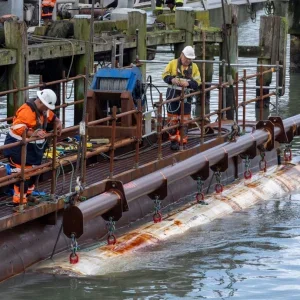
In social media posts, the company says breakthrough has been achieved in the 216m-long tunnel connecting the water intake at the upper reservoir to the gate shaft.
The shaft was excavated using drill and blast and the final blast cut through the last 3.1m.
“Fortunately, there have been consistent rock conditions for the entire length of the tunnel,” Snowy 2.0 Tantangara project manager Jonathan Doidge says in a video.
The tunnel will deliver water to the gate shaft, then to the headrace tunnel all the way to the power station at Lobs Hole.
The 62m-deep Tantangara gate shaft will pay an important role in the tunnelling system, providing maintenance capabilities and flood protection for the power station.
“The gate acts like a valve and shuts off water from Tantangara dam, should it ever be required,” said Doidge.
During excavation of the connection tunnel, more than 14,700m3 of material was removed, 1,300m3 of shotcrete applied, and 3,200 rock bolts installed to support the rock face.
In August, Snowy 2.0 announced that a fourth TBM would be deployed to help the project maintain its delivery timeline. Subject to planning approval, the new TBM will be launched before the end of 2025.
Snowy 2.0, being built by Future Generation JV, comprising Webuild, Clough and Lane Construction, is Australia’s largest renewable energy project.







